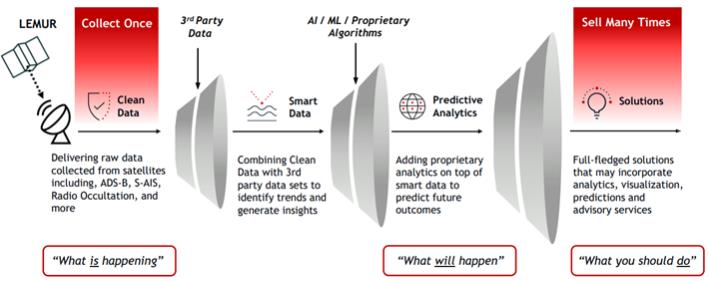The significant components of deferred tax assets (liabilities) are as follows:
|
|
|
|
|
|
|
|
|
| |
|
|
|
| |
|
|
|
|
|
|
| |
|
|
|
|
|
|
|
|
Net operating loss carryforward |
|
$ |
75,129 |
|
|
$ |
38,529 |
|
Research and development credit carryforward |
|
|
6,002 |
|
|
|
2,454 |
|
| |
|
|
599 |
|
|
|
52 |
|
| |
|
|
4,177 |
|
|
|
367 |
|
| |
|
|
440 |
|
|
|
855 |
|
| |
|
|
2,284 |
|
|
|
1,073 |
|
|
|
|
|
|
|
|
|
|
Gross deferred tax assets |
|
|
88,631 |
|
|
|
43,330 |
|
Less: Valuation allowance |
|
|
(74,558 |
) |
|
|
(43,330 |
) |
|
|
|
|
|
|
|
|
|
| |
|
|
14,072 |
|
|
|
— |
|
| |
|
|
|
|
|
|
|
|
| |
|
|
(14,072 |
) |
|
|
— |
|
Foreign property and equipment and intangibles |
|
|
(835 |
) |
|
|
(338 |
) |
|
|
|
|
|
|
|
|
|
Gross deferred tax liabilities |
|
|
(14,907 |
) |
|
|
(338 |
) |
|
|
|
|
|
|
|
|
|
Net deferred tax liabilities |
|
$ |
(835 |
) |
|
$ |
(338 |
) |
|
|
|
|
|
|
|
|
|
As of December 31, 2021, the Company had accumulated undistributed earnings generated by its foreign subsidiaries of $10,688. The Company continues to assert that all its foreign earnings are to be permanent income reinvested and expects future U.S. cash generation to be sufficient to meet future U.S. cash needs. As such, the Company has not recognized a deferred tax liability related to unremitted foreign earnings.
Realization of the deferred tax assets is dependent upon the generation of future taxable income, if any, the amount and timing of which are uncertain. The Company could not conclude that it was more likely than not that tax benefits from operating losses would be realized and, accordingly, has provided a full valuation allowance against its United States, Singapore, Luxemburg, Canada, and a portion of their United Kingdom deferred tax assets. The valuation allowance as of December 31, 2020 was $43,330, which increased to $74,558 as of December 31, 2021. The increase in the valuation allowance of $31,228 includes $10,347 related to the acquisition of exactEarth’s deferred tax assets subjected to a valuation allowance through purchase accounting. The remaining valuation allowance change of $20,882 is mostly related to current year losses.
At December 31, 2021, the Company had $189,313 and $65,512 of federal and state net operating losses available to reduce future taxable income, which will begin to expire in 2032 for federal and state tax purposes. Approximately $106,788 of federal net operating loss included above can be carried forward indefinitely. At December 31, 2020, the Company had $135,134 and $38,323 of federal and state net operating losses available to reduce future taxable income.
The Company also has federal research and development tax credit carryforward of $3,332 and $2,454 as of December 31, 2021 and 2020, respectively. These federal tax credits begin to expire in 2039.
The federal and state net operating loss carryforwards and certain tax credits may be subject to significant limitations under Section 382 and Section 383, respectively of the Internal Revenue Code of 1986, as amended, and similar provisions under state law. Under those sections of the Internal Revenue Code, if a corporation undergoes an “ownership change,” the corporation’s ability to use its
pre-change
net operating loss carryforwards and other
pre-change
tax attributes, such as research and development tax credits, to offset its post-change income or tax liability may be limited. In general, an “ownership change” will occur if there is a cumulative change in ownership by
“5-percent
shareholders” that exceeds 50 percentage points over a rolling three-year period. The Company has not yet undertaken an analysis of whether the past equity financing transactions constitute an “ownership change” for purposes of Internal Revenue Code Section 382 and Section 383. The Company may experience ownership changes in the future from the sale of its equity or business combination transactions.
As of December 31, 2021, the Company had $12,063, $2,685, $16,793 and $188 of Luxembourg, Singapore, Canada and United Kingdom foreign net operating losses available to reduce future taxable income, which will begin to expire in 2035 for Luxembourg and in 2029 for Canada, while Singapore and United Kingdom have indefinite carry forward period. As of December 31, 2020, the Company had $6,227, $2,336, $16,398 and $192 of Luxembourg, Singapore, Canada and United Kingdom foreign net operating losses available to reduce future taxable income.
Unrecognized Tax Benefits
The Company does not have any significant uncertain tax positions.
The Company recognizes interest accrued related to unrecognized tax benefits in interest expense and penalties, if any, in general and administrative expense on the accompanying Consolidated Statements of Operations.
The Company is subject to taxation in the United States, Canada, Luxembourg, Singapore and the United Kingdom. The Company has not been audited by the Internal Revenue Service or any state or foreign tax authority. The Company is subject to audit by the Internal Revenue Service for income tax returns filed since inception due to net operating loss carryforwards. The Company is subject to audit in Singapore and the United Kingdom from tax years 2017 and 2018, respectively, and in Luxembourg from tax year 2019.

